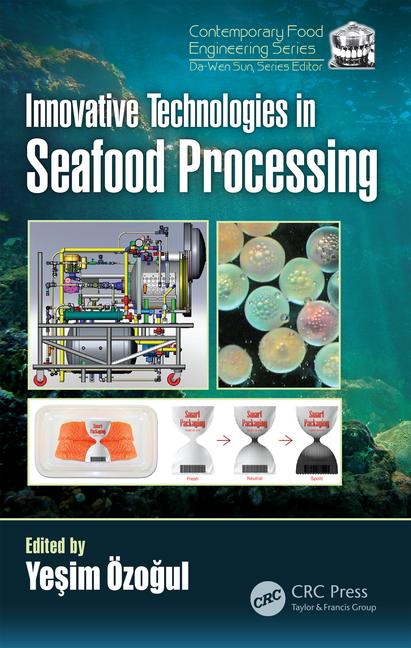Cold Supply Chain & Logistics: It's not easy being green
Want no-cost, low-cost energy savings? It takes an operational “tune-up” says one expert.
Find yourself longing for ‘80s fashion and music? Maybe not. But don’t you miss that decade’s industrial energy prices?
Although he might not use the same phrasing, Marcus Wilcox will soon put the same question to public refrigerated warehouse officials. The president of Cascade Energy Engineering, an independent consulting firm, Wilcox will address an annual conference and expo hosted in late April by the International Association of Refrigerated Warehouses (IARW) and World Food Logistics Organization (WFLO).
“Climate change is not a dinnertime topic at Thanksgiving or Christmas. Yet that legislation is coming and pushing industrial refrigeration users to focus on sustainability,” he says. “Ten years ago, most of our customers did not even have a corporate sustainability policy or a ‘green’ plan of action.”
For that matter, Wilcox also has been learning along the way. While working on a Master’s in mechanical engineering at Oregon State University, Wilcox says he became one of the first students assisting the U.S. Department of Energy’s newly created “Industrial Assessment Center.” The job had him perform approximately 50 energy efficiency audits at industrial sites throughout the Northwest. With a self-described “love for ammonia refrigeration,” Wilcox later co-founded Cascade Energy Engineering, Walla Walla, Wash., in 1993.
Wilcox says the energy landscape itself has changed dramatically since the early ‘90s. The past two decades have seen cost increases across all basic energy fronts. Meanwhile, overall customer load growth and demand stretched most utilities’ infrastructure and generation capacity. Wilcox notes that utilities were not accustomed to promoting energy conservation – let alone incentivizing users for reducing load. Likewise, it’s only been recently that utilities have included energy efficiency alongside more traditional energy resource strategies, such as from coal and hydroelectric dams.
Wilcox credits industry technology providers and even utilities for a new generation of equipment, materials, software, and strategies to help large industrial refrigeration operators better conserve energy and/or reduce energy. He says new refrigeration controls, variable frequency drives, warehouse lighting and other technologies can reduce energy use by as much as 10 percent to 30 percent in brownfield cold warehouse operations. Meanwhile, greenfield sites using these technologies – combined with the latest doors, battery chargers and more – can reduce energy use and cost by as much as 50 percent compared to traditional designs.
Then again, Wilcox says he realizes most IARW-WFLO convention attendees (top warehouse executives) will be interested in more low- or no-cost energy savings options. For that reason, this muscle car enthusiast says he plans to talk about the importance of a facility “tune-up.”
“We offer a ‘Kaizen Blitz,’ which is intensive, multi-day review of a system or facility and our goal is to help operators cut energy use by 10 percent to 20 percent by addressing low- and no-cost opportunities,” says Wilcox. “It typically includes rethinking your system capabilities and limitations, retro-commissioning the system and reviewing maintenance practices. All key parties are involved in the process – from your in-house staff to your preferred contractors . . . It’s based on the premise that it’s difficult to improve performance until you’re measuring it.”
Cascade is the corporate energy management firm for foodservice distribution giant Sysco Corp. Wilcox says Cascade helped develop Sysco’s energy management strategy with a program that leverages web-based tools and included an initial tune up at all 108 Sysco distribution centers. Cascade tracks more than 500 electric and gas utility bills and monitors approximately 150 near real-time power meters. At any time, Sysco personnel can track individual facility performance or companywide benchmarking metrics. In addition, Cascade supports Sysco’s corporate project managers when they consider new construction or expansion upgrades and refine corporate bid specifications.
Since introducing a companywide energy management plan in 2006, Sysco has reduced companywide energy intensity (kWh per cubic foot) by one third, says Wilcox.
Note that facility tracking mechanisms also can help operators more quickly identify and correct a problem.
“Perhaps there’s been a change in staff, a new contractor or a piece of equipment that’s not right. What matters is whether you can identify the problem and turn it around,” says Wilcox.
Wilcox also recommends that facility owner-operators …
… see the true cost picture. “There’s a big difference between becoming more efficient versus simply reducing your cost of electricity per kilowatt hour,” he says. “A warehouse can sign a contract for cheaper energy but that does not mean the facility is going to be more efficient in using that power.”
… enlist an “energy champion.” A senior level official should consistently champion energy savings evaluations, strategies and/or technologies.
… communicate on the front lines. “You need buy-in from engine room operators,” Wilcox notes. “Any party – a supplier, a contractor or engine room operator – could innocently alter a few key set points and neutralize a great energy savings program. These operators need to know exactly what’s happening.”
… remember equipment and systems are inter-related. “Almost every system is more energy efficient and has more capacity when it runs better,” he says. “A lighting or door retrofit (to more energy efficient models) can help reduce the refrigeration load. If you fine tune equipment or correct performance issues, systems are more efficient and have more capacity.”

LEED certification for cold warehouses
The U.S. cold storage industry is, without a doubt, big.
U.S. Department of Agriculture officials estimate that there’s a total 94.75 million square feet of general refrigerated storage. Of this space, approximately 72.5 million square feet is public general refrigerated warehouse space. As a result, the cold storage industry can have a significant impact on the environment.
The International Association for Cold Storage Construction (IACSC) and International Association of Refrigerated Warehouses (IARW) say they want to help members learn to measure and reduce carbon footprint. Accordingly, an IACSC-IARW Construction/Codes Committee formed a Green Project Scorecard subcommittee to develop an applicable Leadership in Energy & Environmental Design (LEED) rating system for the cold storage industry in cooperation with the U.S. Green Building Council (USGBC).
LEED is an internationally recognized green building certification system managed and implemented by USBGC.
Officials say they want to develop a set of recommendations to present to the USGBC to adapt current LEED ratings to cold storage buildings.
They note that some criteria in the current generic LEED rating system do not apply to the cold storage industry. For example, LEED currently provides credits for selecting a site close to densely populated urban areas with access to public transportation. Often, though, cold storage facilities are intentionally located away from urban infrastructure. The subcommittee has identified this and other areas of conflict between green cold storage construction strategy and current LEED credits and their intent.
IACSC says USGBC already has addressed similar projects with the hospitality industry and schools, which have their own rating systems (recognizing the unique nature of buildings in those sectors).
Clayco’s Anthony Johnson leads the IACSC / IARW Green Project Scorecard subcommittee. Other members include Eric Smith, International Institute of Ammonia Refrigeration; Chuck Toogood, M&M Refrigeration; Jake Stefan, ARCO Design/Build; and Ron Vallort, Ron Vallort and Associates.
Subcommittee members say they will develop a energy optimization baseline to catalog energy use by the average cold storage facility. Then the subcommittee will consult USGBC about how to address other credits that may not currently align with this product type.
Industry executives will discuss the LEED cold warehouse initiative, green building and design at the 2011 IACSC Conference & Expo, November 3-6, 2011, at the Planet Hollywood Resort & Casino in Las Vegas, Nev. Visit www.iacsc.org to learn more.
Looking for a reprint of this article?
From high-res PDFs to custom plaques, order your copy today!






